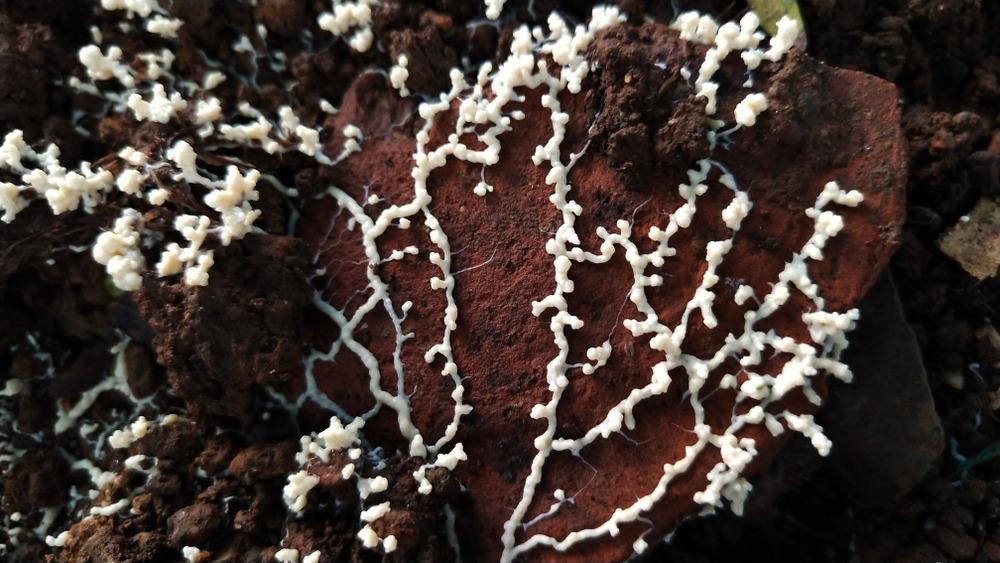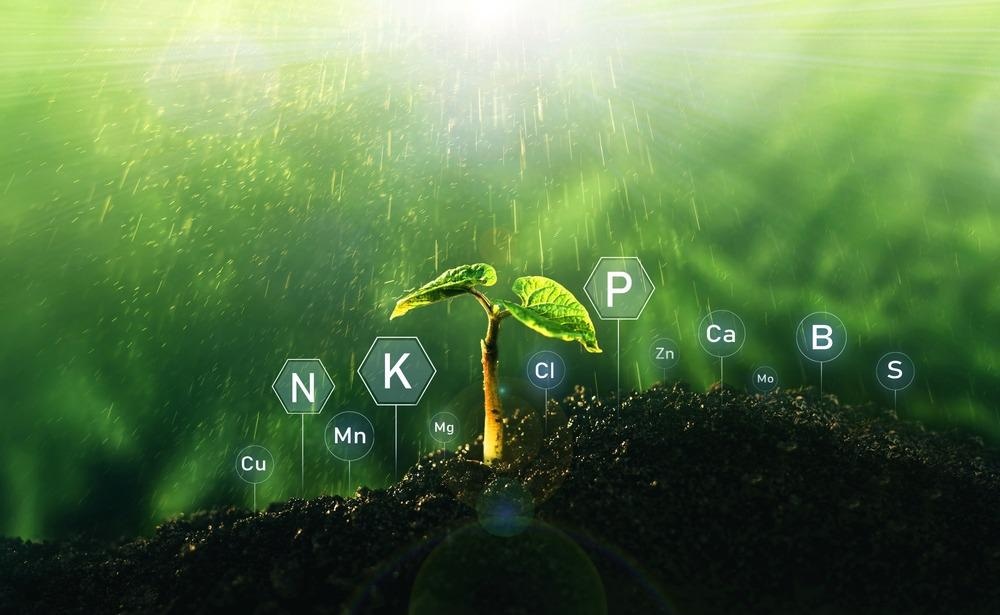A nutrient cycle refers to the exchange of organic and inorganic matter throughout an ecosystem, causing particular substances and elements to be sequestered, removed, recycled, and generated in the environment. Microbial life has long been known to play a vital role in the consumption and regeneration of resources in the environment at many levels and could be considered the major tool by which nutrient recycling occurs.

A fungus growing on soil. Image Credit: Pratimaan/Shutterstock.com
How are nutrients recycled?
With regards to trophic levels, microorganisms are capable of being: primary producers, engaging in photosynthesis or other autotrophic processes; heterotrophic consumers that consume other microorganisms; or decomposers, breaking down dead plant and animal material to recycle their components as nutrients. Therefore, the presence and character of microorganisms in a particular environment can directly influence the abundance of other life there, both on the micro and macro scale, by tuning the availability and type of nutrients in the surroundings.
Microorganisms have populated the earth for over 3 billion years, and thus predate the presence of animals and plants around which nutrient ecologies have evolved. As discussed, microorganisms are able to obtain nutrients from the environment, utilizing biochemical processes to generate energy. Over millions of years, these processes have shaped the Earth itself, causing and mediating the transition of elements from forms that they would otherwise remain locked in forever to those accessible to other organisms and chemical processes, the concern of the field of geomicrobiology.
Microbial nitrogen cycling
Perhaps the best understood and important microbial cycling network is that of nitrogen, an essential element in all living organisms and a key component of the most fundamental biomolecules such as nucleic acids.
The vast majority of nitrogen on Earth is in the form of atmospheric dinitrogen, inaccessible to all but the highly diverse nitrogen-fixing bacteria and archaea. These microorganisms generate ammonia from atmospheric nitrogen, which can then be utilized by other organisms and become incorporated into their biomass. Ammonia can be oxidized to nitrate via nitrification, whereupon it is converted back to dinitrogen gas by either nitrification or anaerobic ammonium oxidation.
Microorganisms are involved in each step of nitrogen fixation, nitrification, and denitrification, in some cases specializing in a particular aspect of one of these roles or performing them simultaneously. For example, some species of bacteria are able to fix dinitrogen gas and denitrify at the same time, while others previously thought to solely exist by nitrate oxidation have been found to be able to survive in nitrogen-lacking environments, switching to sulfide as an energy source.
At least 14 novel redox reactions have been noted in the conversion of nitrogen compounds by microorganisms, spanning redox states from -3 to +5. Microorganisms utilize a wide variety of enzymes to achieve these reactions, and novel interactions are continuously being recognized.

Soil nutrients. Image Credit: Miha Creative/Shutterstock.com
Other geomicrobiological cycles
Similarly, microorganisms are involved in the biogeochemical cycling of carbon, oxygen, phosphorus, sulfur, and other elements vital to life. While purely chemical and physical interactions between components of the atmosphere, hydrosphere, and lithosphere also drive nutrient cycling on a global scale, microorganisms have played an indispensable role in shaping and maintaining the Earth as a place suitable for life as we know it.
One example of how microorganisms have drastically shaped the environment of Earth is the great oxidation event, where approximately 2.2 billion years ago the Earth’s atmosphere and oceans experienced a sudden and dramatic rise in oxygen concentration due to the growing influence of photosynthesizing cyanobacteria.
Prior to this, high nitrogen, carbon dioxide, and carbon monoxide concentrations in the atmosphere would have generated a mildly reducing environment, switching to a strongly oxidizing one afterward. This is evidenced by the abundance of minerals containing reduced forms of metals dating from this period, and the sudden appearance of oxidized formations in the geological record.
Arsenic species in the pre-event reducing atmosphere would have been largely incorporated into rock but were heavily liberated in the newly oxidizing atmosphere and allowed to enter the oceans. A paper by Chen et al. (2020) associates the evolution of arsenic detoxification bio tools with this event, where a strong selection pressure towards the development of arsenic-resistant genes would be favored. Microorganisms remain a key component in arsenic cycling, modulating concentrations between the atmosphere, lithosphere, and hydrosphere.
References
Further Reading